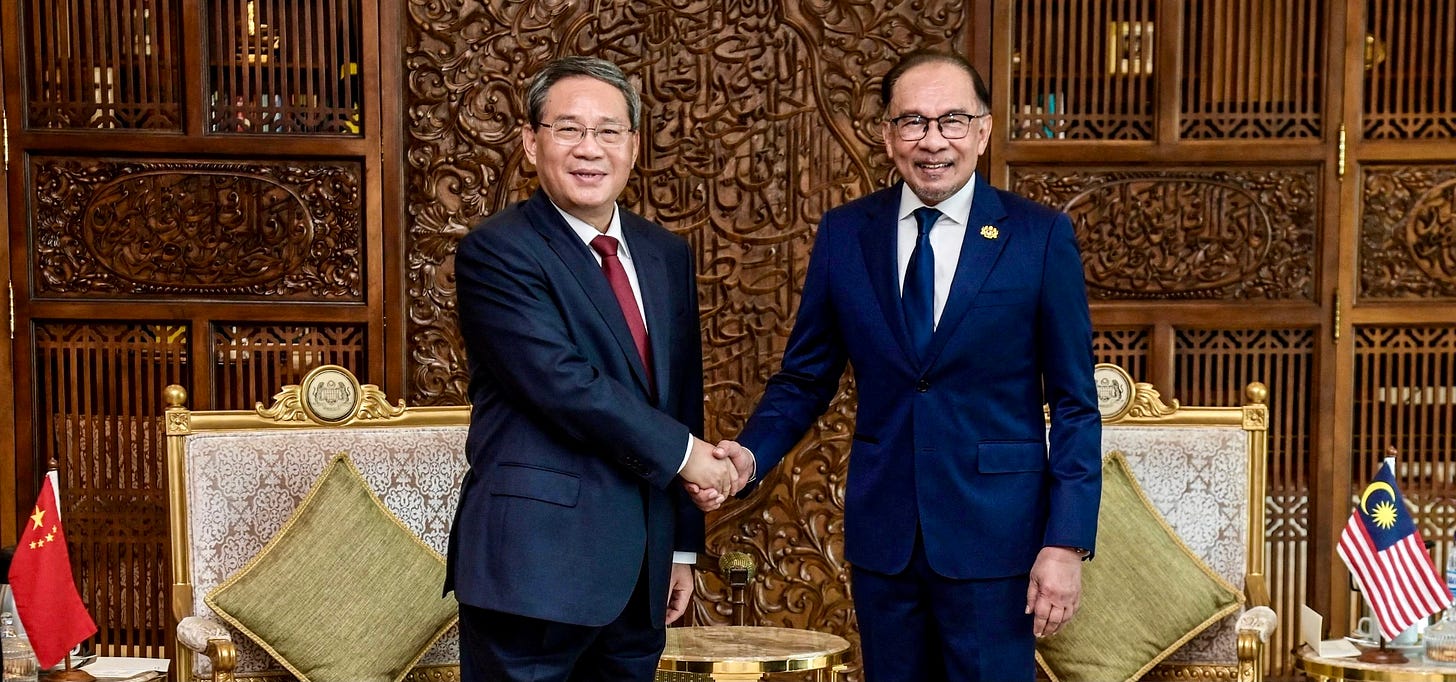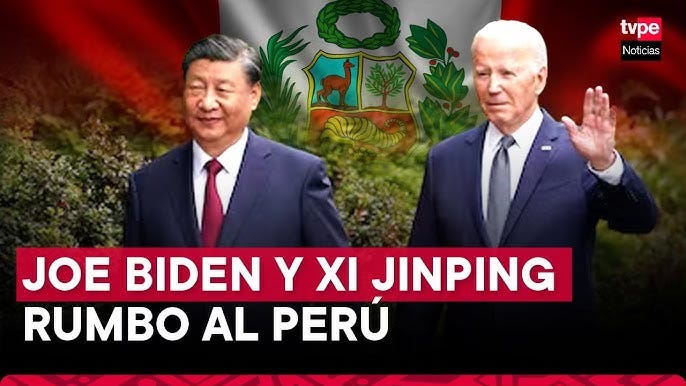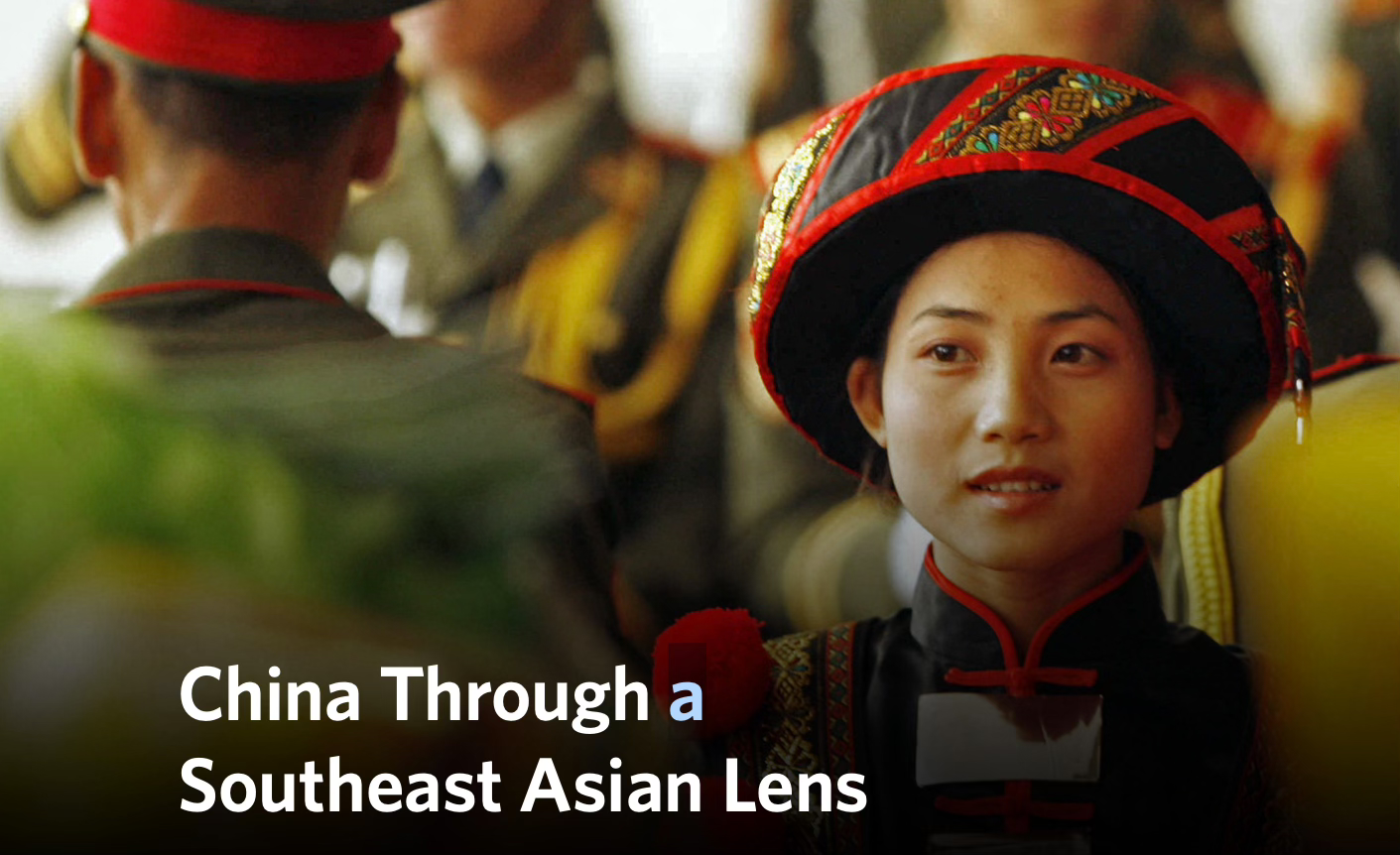Asia-Pacific Potency
Technology innovation key to China's modernisation drive, APEC, energy transition, protectionism, China Through a Southeast Asian Lens.
Technology innovation key to China's modernization drive: Malaysian experts
KUALA LUMPUR (Xinhua)
An enthusiastic and open approach to new technology has fuelled China's rapid modernisation as an industrial and technological power, participants said at a forum held here on Thursday.
This attitude, complemented by the progressive and diligent work ethic of the Chinese people along with its overwhelmingly successful results, represents a pathway for other nations seeking to improve themselves, asserted speakers at this year's edition of the International Forum On New Inclusive Asia with the theme "Chinese Modernization and Lessons for Developing Countries."
China's rapid adoption of emerging technologies such as artificial intelligence (AI) has seen significant strides, with home-grown companies such as Baidu and Tencent at the forefront of AI research and development, creating applications that range from autonomous driving to advanced healthcare solutions, Eugene Pek Chuen Khee, head of Taylor's University School of Management and Marketing, said in his welcome remarks at the forum.
"China's journey from a largely agrarian society to a global economic powerhouse is nothing short of remarkable. Over the past few decades, China has transformed its economy, lifted hundreds of millions out of poverty, and emerged as a leader in technology and innovation. This transformation offers several key lessons for developing countries aspiring to achieve similar progress," he said.
"China's modernization journey offers valuable lessons for developing countries, including Malaysia. By adopting visionary leadership, investing in infrastructure, emphasizing education and innovation, implementing economic reforms, promoting inclusive growth, and prioritizing environmental sustainability, Malaysia can pave its own path to prosperity," he said.
Minister of the Chinese Embassy in Malaysia Zheng Xuefang said the world has entered into a new phase of turbulence and uncertainty, tested by escalated competition between major powers, intensified geopolitical confrontation, re-occurrence of anti-globalization, and increased unilateralism. Against this backdrop, China has successfully pioneered its modernization path, prospering both its own nation and the whole world as an energetic powerhouse and consistent peace stabilizer.
"The world is a global community shared by all. Chinese modernization does not solely belong to China. It is a great asset to the whole world. China is willing to work with Malaysia and all other countries to advance the common modernization of humanity. Together, we will play the beautiful symphony of common development and embrace a brighter future for all," he said.
For his part, Koh King Kee, president of the Centre for New Inclusive Asia, a non-governmental Malaysian think tank said Malaysia has embarked on its own development program and stands to gain China's experience as both countries have a deep interest in eradicating poverty, uplifting living standards, and promoting sustainable development.
"Beyond modernization of a huge population, other features of China's modernization in the new era such as its focus on peaceful growth, poverty alleviation, common prosperity, cultural advancement, and respect for the environment holds relevance for many developing nations," he said.
The one-day forum was co-organized by Malaysia's Center for New Inclusive Asia, School of Management and Marketing of Taylor's University and China's Global Governance Institution. It brought together distinguished speakers from Malaysia, China, Singapore and Pakistan in three sessions to explore the lessons of China's modernisation efforts and the lessons that developing countries can apply and adapt to their own developmental efforts.
https://www.bernama.com/en/news.php/world/news.php?id=2363553
APEC, energy transition, protectionism
By Peter TC Chang
In October, Spain experienced devastating floods, while earlier this year, the US was struck by two powerful hurricanes. These extreme weather events are stark reminders that global climate change is real, and time is running out to take meaningful actions before its effects become irreversible.
This week, leaders from the Asia-Pacific region are convening in Lima, Peru, for the APEC Leaders' Meeting, where among many other objectives, energy transition is a central focus. The meeting aims to promote sustainable and equitable energy shifts, with member economies working to accelerate clean energy adoption and ensure affordable, accessible solutions, especially for developing members.
Earlier, in August, Malaysia participated in the 14th APEC Energy Ministers' Meeting in Lima, Peru, where Deputy Prime Minister Fadillah Yusof highlighted Malaysia's National Energy Transition Roadmap (NETR), outlining the country's strategy to achieve net-zero greenhouse gas emissions by 2050.
In June, Premier Li Qiang visited Malaysia to commemorate the 50th anniversary of diplomatic relations between the two countries. During the visit, both nations renewed a five-year trade and economic cooperation agreement. This pact includes collaborations in emerging fields such as green development, the digital economy, and artificial intelligence, all of which are crucial for advancing Malaysia's energy transition.
Over the past decade, China has emerged as a global leader in green technology, becoming the world's largest producer of solar panels, wind turbines, and batteries. This is significant for two main reasons. First, advancements in these technologies are allowing us to take substantial steps toward mitigating the impact of climate change. Second, China's large-scale production capacity is making green technologies more affordable and accessible, enabling many countries - especially in the developing world - to embark on their own transitions to cleaner energy and greener economies.
However, geopolitical tensions, particularly the deterioration of US-China relationship, are impeding global efforts to combat climate change. President Biden has pledged to compete with China where necessary and cooperate where possible, with climate change identified as a critical area for collaboration. In September, US climate envoy John Podesta visited China, and both nations reaffirmed their earlier commitments to achieve "practical cooperation results" on climate issues.
Despite these pledges, competition remains a defining aspect of the relationship between the two countries. For example, the ongoing trade conflicts, including US tariffs on Chinese solar panels, wind turbines, and electric vehicles, risks undermining not only American progress but also the broader global green transition.
Biden is attending the APEC Leaders' Meeting, but the significance of his presence is overshadowed by the recent re-election of Trump as the next US President. During his first term, Trump withdrew the US from the Paris Accord, and there is growing concerns that he may take similar actions again, a move that could severely undermine global efforts to address climate change.
Climate change is a reality, and for the first time, in the developing world, we have the technological means to make substantial strides toward cleaner energy and a greener economy. However, unless the developed world can rise above protectionism and nationalism, our efforts to mitigate the impacts of climate change will ultimately prove futile.
https://news.cgtn.com/news/2024-11-14/APEC-energy-transition-protectionism-1ywqYBY2kAE/p.html
China Through a Southeast Asian Lens
By Evan A. Feigenbaum Vice President for Studies, Carnegie Endowment for International Peace and Acting Director, Carnegie China.
Carnegie China has a long history of operations in Beijing. But over the past year, we have shifted our operating model to become a China-focused centre anchored in East Asia more broadly, not just on the Chinese mainland.
By basing Carnegie China’s office operations in Singapore, our centre has new reach in Southeast Asia even as we continue a full suite of activities with a range of Chinese institutional partners.
In this new incarnation, Carnegie China will be an East Asia–based research centre focused on China’s regional and global role—anchored in the wider region and engaging a wide swath of Asian voices.
To make a running start on this broadened mandate, we have brought onboard several leading Southeast Asian scholars, including some of the region’s leading experts on Chinese policy and strategy. We are also launching new branded research products and analytical series, including the workstream that is reflected in this Carnegie China compendium on China Through a Southeast Asian Lens.
The revamped centre will continue to be active in, on, and with Chinese stakeholders and institutional partners. For instance, we maintain a robust suite of track 2 policy dialogues with leading Chinese research centers in both Beijing and Shanghai. But with our broadened mandate anchored in the wider East Asian region, we aim to cast a critical eye on China’s strategic and economic trajectory and look not just to harness Chinese perspectives from the inside out but regional perspectives on China from the outside in. And from its new base of office operations in Singapore, the center aims to highlight Southeast Asian perspectives especially.
This is important for several reasons. For one, intensifying strategic competition between the United States and China risks crowding out local perspectives, forcing a false choice onto Southeast Asian governments, firms, and people. The reality is that nearly everyone in the region prefers addition and multiplication to subtraction and division. While Washington and Beijing seem to believe that Southeast Asians should focus on their agenda of competition with one another, the dominant dynamic in the region itself has been to leverage America and China to serve Southeast Asians’ own aspirations for growth, employment, upskilling, and sustainability.
We aim to understand the implications of these local dynamics, even as we continue to address the big strategic and international security questions that will shape Asia’s future with a more powerful and assertive China.
This compendium focuses on China and Southeast Asia from the perspective of each side.
One section examines how Southeast Asia’s many new governments of the past few years may or may not look at China differently from their predecessors. Another turns the focus back to Beijing by asking how effective Chinese diplomacy under President Xi Jinping has been in this diverse and multifaceted region. A final section considers China’s much-vaunted Belt and Road Initiative, which has delivered mixed returns and complex stories across Southeast Asia.
This compendium is emblematic of our exciting new buildout under the centre’s dynamic new model.






